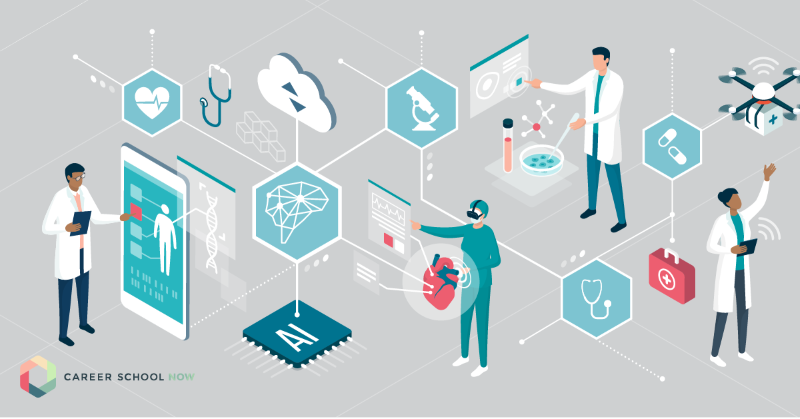Comprehending the Trick Duties and Responsibilities in Medical Administration
Comprehending the Trick Duties and Responsibilities in Medical Administration
Blog Article
Best Practices in Medical Management for Improving Performance and Reducing Costs
In the ever-evolving landscape of healthcare, the search of ideal methods in clinical management is critical for enhancing performance and curbing expenditures. By incorporating sophisticated modern technologies such as digital wellness documents and telemedicine, medical care suppliers can streamline operations and boost patient treatment. Technology alone is not a remedy; maximizing resource allocation and promoting collaborative interaction among care teams are equally crucial. As organizations make every effort to balance top quality and expense, what methods should be focused on to accomplish these twin goals? The response to these inquiries hold the secret to a much more lasting healthcare system.
Leveraging Advanced Innovation
In today's swiftly advancing healthcare landscape, leveraging sophisticated modern technology is no longer optional yet essential for effective medical management. The integration of digital remedies into medical care systems has actually changed the method centers operate, improving procedures and enhancing individual care. Electronic Health And Wellness Records (EHRs) are crucial, offering extensive client data that can be accessed instantaneously by authorized employees, hence decreasing redundancy and reducing errors. By centralizing patient information, EHRs eliminate the requirement for difficult documentation and assist in seamless communication among doctor.
Telemedicine is one more technological innovation that has actually reinvented patient interaction. It provides benefit for both individuals and health care professionals by making it possible for remote appointments, which can lower the demand for in-person check outs and maximize appointment scheduling. Furthermore, telehealth platforms can prolong medical care access to rural or underserved areas, linking gaps in care distribution.
Furthermore, using Expert system (AI) and artificial intelligence is coming to be progressively prevalent in anticipating analytics, allowing for very early discovery of potential health and wellness issues and even more educated decision-making. These innovations, when incorporated efficiently, can improve diagnostic precision and customize patient treatment strategies, inevitably causing enhanced medical care end results and functional performance.
Optimizing Resource Allowance
Effective source allotment is important for taking full advantage of the effectiveness of medical management. By purposefully handling sources such as personnel, devices, and funds, healthcare facilities can significantly enhance their functional efficiency, boost person outcomes, and reduce unneeded expenses. The primary step in maximizing resource allotment involves performing an extensive evaluation of existing properties and determining areas where sources might be underutilized or exhausted. This assessment should be data-driven, utilizing metrics and analytics to notify decision-making processes.
Prioritizing source allowance based on patient requirements and solution demands is crucial. This involves lining up sources with high-demand locations, such as emergency care or specialized treatments, to ensure prompt and effective person care. Applying adaptable staffing models can also optimize labor sources by readjusting employees allocation in action to changing person quantities. Furthermore, embracing telemedicine and various other technological services can relieve physical source constraints by using alternate avenues for patient-provider communications.
Economic sources ought to be thoroughly kept an eye on and allocated with strategic insight to support both temporary functional requirements and long-term institutional objectives. This includes investing in training programs that enhance personnel proficiencies and embracing energy-efficient methods that minimize operational prices (medical administration). Inevitably, an enhanced source allotment technique cultivates a lasting medical care setting that is responsive, effective, and economically sensible
Streamlining Workflow Procedures
When medical care facilities purpose to boost functional effectiveness, streamlining visit homepage process procedures ends up being a crucial emphasis. Effective operations lessen redundancy, get rid of unnecessary actions, and boost control amongst medical care experts. This strategy not just speeds up service delivery yet likewise improves the quality of individual treatment.

Next, technology combination plays a substantial duty in simplifying workflows. Implementing digital health documents (EHRs) and computerized medical professional order access (CPOE) systems lowers documents, reduces human mistake, and makes sure info comes to all pertinent employees. In addition, leveraging telemedicine systems can enhance patient examinations why not find out more and follow-ups, decreasing the strain on physical framework.

Eventually, streamlined workflows lead to cost reductions and improved person satisfaction, fostering an extra sustainable medical care atmosphere.
Enhancing Information Monitoring
Structure upon structured operations, enhancing data administration ends up being a vital element in advancing medical care administration. Effective information monitoring systems are crucial for maintaining accurate individual records, boosting decision-making, and making certain conformity with regulatory standards. By carrying out durable data administration services, health care centers can improve the quality of patient treatment while concurrently lowering functional costs.
One secret facet of enhancing data management is the integration of advanced digital health and wellness document (EHR) systems. These systems assist in the smooth exchange of client information across different divisions, reducing duplication of tests and lessening errors. A properly Continue designed EHR system sustains data analytics, allowing doctor to identify fads and make notified decisions regarding patient treatment.
Moreover, safeguarding patient information is extremely important. Embracing comprehensive cybersecurity actions, consisting of file encryption and normal audits, ensures the honesty and discretion of delicate details. This not just shields patients yet also maintains the organization's track record.
Spending in team training is one more essential element. Educating health care professionals on data administration methods enhances their capability to effectively utilize technology, bring about enhanced person outcomes. Finally, boosting data management via sophisticated technology and comprehensive training is essential for attaining efficiency and price decrease in medical administration.
Fostering Collaborative Interaction
A crucial part ahead of time medical administration is promoting collective interaction amongst healthcare professionals. Efficient communication is critical for ensuring seamless patient treatment, optimizing therapy results, and minimizing errors. By encouraging open dialogue and sychronisation throughout multidisciplinary groups, medical care organizations can enhance their operational effectiveness and minimize unneeded expenses.
Central to this technique is the combination of interaction modern technologies such as digital wellness documents (EHRs) and safe messaging platforms, which help with the quick exchange of vital client details. These devices make it possible for health care carriers to gain access to and share data in genuine time, making sure that all staff member are informed and aligned in their decision-making procedures. Moreover, regular group conferences and interdisciplinary rounds can even more advertise a culture of cooperation and accountability.
Training programs focused on improving interaction skills are likewise crucial. These programs can aid personnel create the capability to communicate information plainly and pay attention actively, thus reducing misunderstandings and fostering an encouraging workplace. Furthermore, embracing standard communication methods, such as SBAR (Scenario, History, Evaluation, Recommendation), can improve the exchange of info, making sure that essential details are communicated succinctly and successfully. Ultimately, cultivating collective communication results in enhanced medical care shipment and cost savings (medical administration).

Final Thought
Integrating sophisticated innovation, such as electronic wellness documents and telemedicine, along with enhanced resource allocation and streamlined process processes, is crucial for improving effectiveness in clinical management. Efficient information administration and cultivating collaborative communication amongst health care teams are crucial for lessening redundancies and boosting care top quality. By prioritizing preventative treatment and participating in top quality improvement campaigns, medical care companies can attain considerable cost savings and boosted person outcomes, therefore making certain lasting healthcare shipment in a progressively complex atmosphere.
Report this page